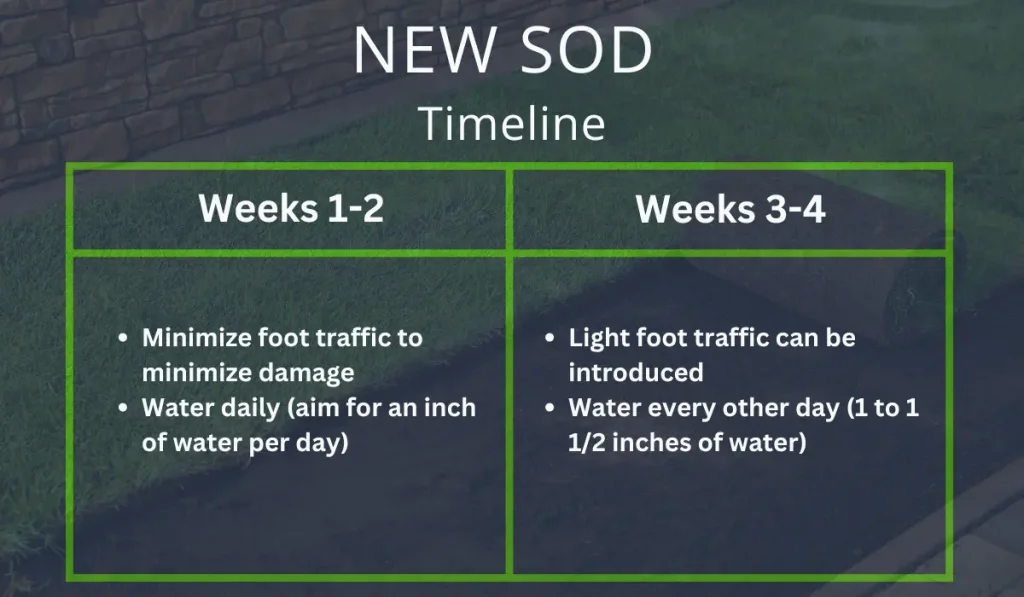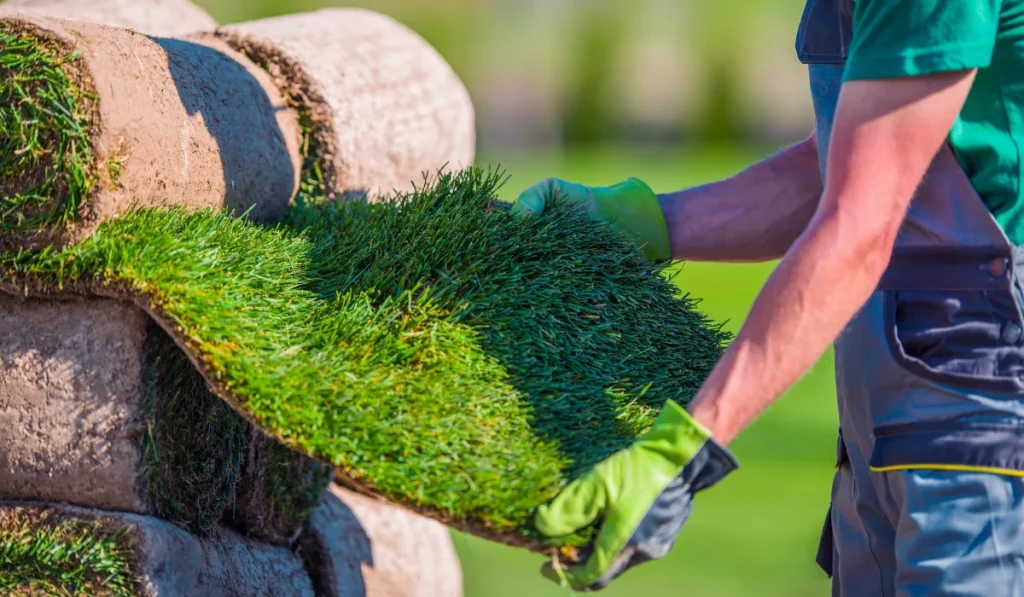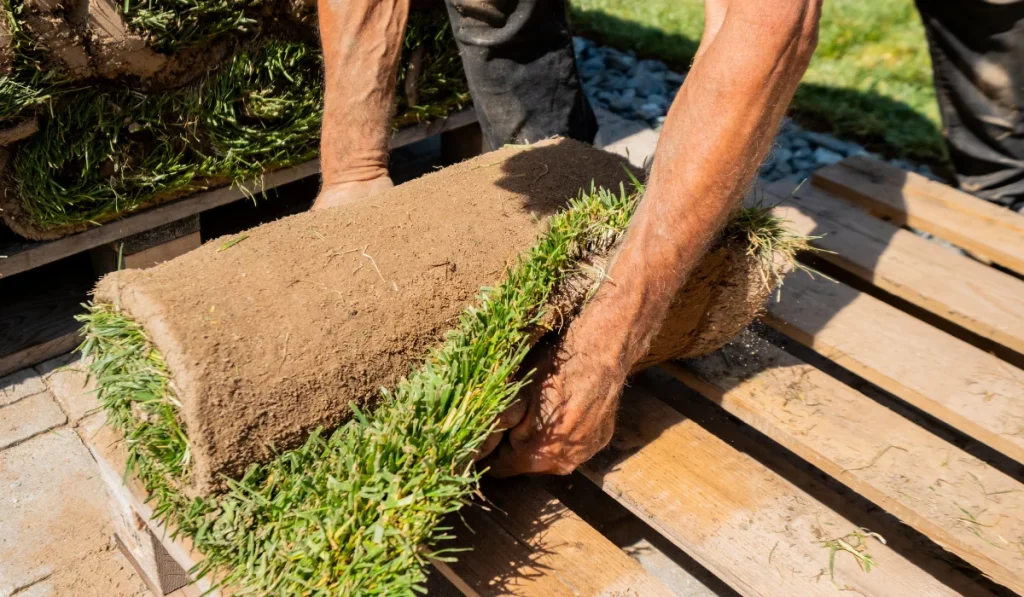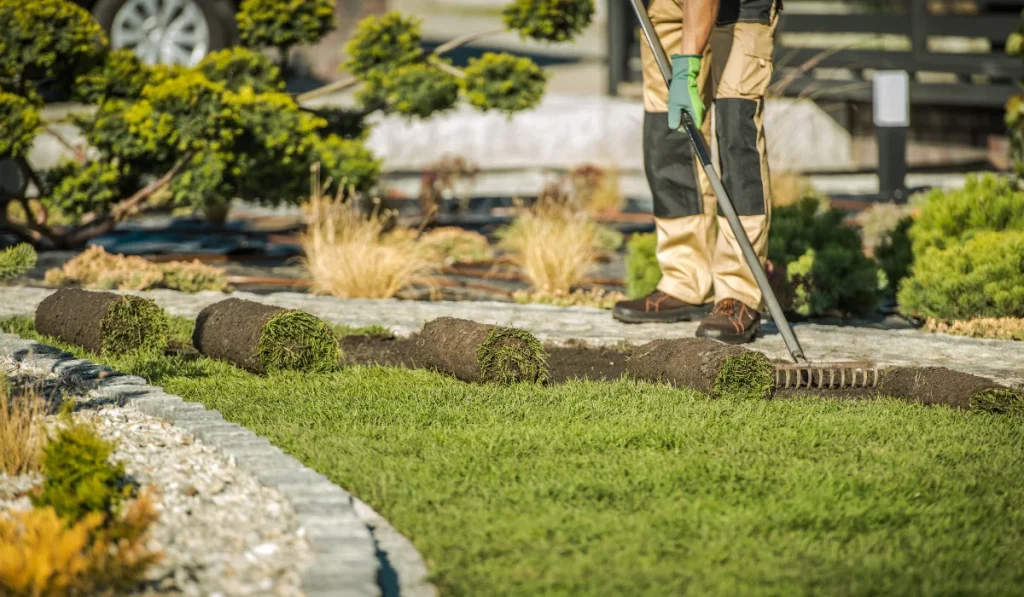Laying new sod in your yard brings a fresh look, and can transform your outdoor space instantly. But the big question is: when can you walk on new sod?
Typically, it’s recommended to wait about two weeks before walking on newly laid sod.
How can you be sure your sod is ready for foot traffic without causing damage? Stick around to find out the best practices for new sod.
Key Takeaways
- New sod must not be walked on immediately after installation to allow the fragile roots time to establish in the soil.
- For the first two weeks, daily watering is crucial to help new sod develop its root system.
- The ideal waiting period before walking on new sod varies depending on factors that can influence root establishment.
- If the sod resists when gently pulled during the tug test, it indicates that the roots are sufficiently established for walking.
Why Should You Wait to Walk on New Sod?
Unlike established grass, new sod pieces haven’t developed a robust root system yet. Their survival depends on quickly forming roots that can reach down into the soil and absorb essential water and nutrients.
Walking on them too soon can damage the tender, developing root system. This disruption of the rooting process can deprive them of water and nutrients. Eventually, they will struggle to survive and may wilt or even die.
Monitoring Your New Sod

A new sod lawn requires careful attention during the early weeks. The crucial timelines to watch are the first two weeks and the third and fourth weeks after sod installation.
First Two Weeks: Crucial Care
The first week is critical for new sod to establish its roots. During this period, it is essential to minimize foot traffic to prevent damaging the fragile root system.
Frequent watering is a must to ensure the sod receives adequate moisture for root growth.
Watering should be done daily until the end of the second week. Aim for about an inch of water per day. This helps the roots settle into the soil and establish themselves.
Three to Four Weeks Post-Installation
Three to four weeks after laying sod, the root system should have started to establish more firmly.
Light foot traffic can be introduced gradually at this stage. Adjust the watering schedule to encourage deep-root growth.
Transition to watering every other day, providing about 1-1.5 inches of water per week. This helps deepen the root system further.
Factors That Impact Waiting Time
When it comes to walking on new sod, the typical advice to homeowners is often to wait two weeks. But, in reality, the amount of time can vary based on several factors.
Here’s why two weeks isn’t always enough:
| Factors | Details |
|---|---|
| Type of Sod | The type of sod you choose affects how quickly it establishes roots. Zoysia grass might take longer compared to other types like Bermuda or Fescue. |
| Amount of Water | Irrigation systems and sprinklers are crucial for watering new sod. Too little water can delay root establishment, while overwatering can cause disease. |
| Topsoil Quality | Good topsoil with nutrients helps the roots establish faster. Poor-quality soil can slow the process, requiring a longer wait before walking on it. |
| Square Feet of Sod | Larger areas of new sod can take more time to establish, especially if the watering and care aren’t evenly distributed across the entire space. |
| Installation Timing | Late-evening installations often benefit from cooler temperatures and reduced evaporation, aiding quicker root growth. |
How to Know When Your New Sod is Ready
To determine if your new sod is ready for foot traffic, try the tug test. This method helps assess if the roots have established well in the soil.
Here’s how to do it:
Select a small section of the new sod. Observe the color and growth. A green lawn indicates good progress.
Gently tug on the grass blades. If the sod lifts easily, the roots haven’t taken hold yet. If there’s noticeable resistance, roots are establishing well. Light walking can be allowed once there’s resistance.
Tips for Walking on New Sod
To ensure your new sod develops a healthy root system and thrives, follow these practical lawn care guides on how to walk on and care for it properly:
- Start with light foot traffic to allow the sod to establish strong roots.
- Spread out foot traffic patterns to avoid creating concentrated pressure points.
- Avoid heavy activities on new sod until the grass is fully established.
- Mow the new sod for the first time when it reaches about 3-4 inches in height.
- Make sure the mower blades are sharp to prevent tearing the grass.
- Collect clippings after the first mow to avoid adding stress to the new grass.
- Water new sod regularly, but be careful not to overwater to avoid root rot.
- Fertilize new sod after it’s had a few weeks to establish.
- Use a fertilizer designed for new lawns.
- Hold off on applying weed killer until the sod is well-rooted.
- Consult with landscaping experts for tailored lawn care advice and pricing specific to the sod type and climate.



